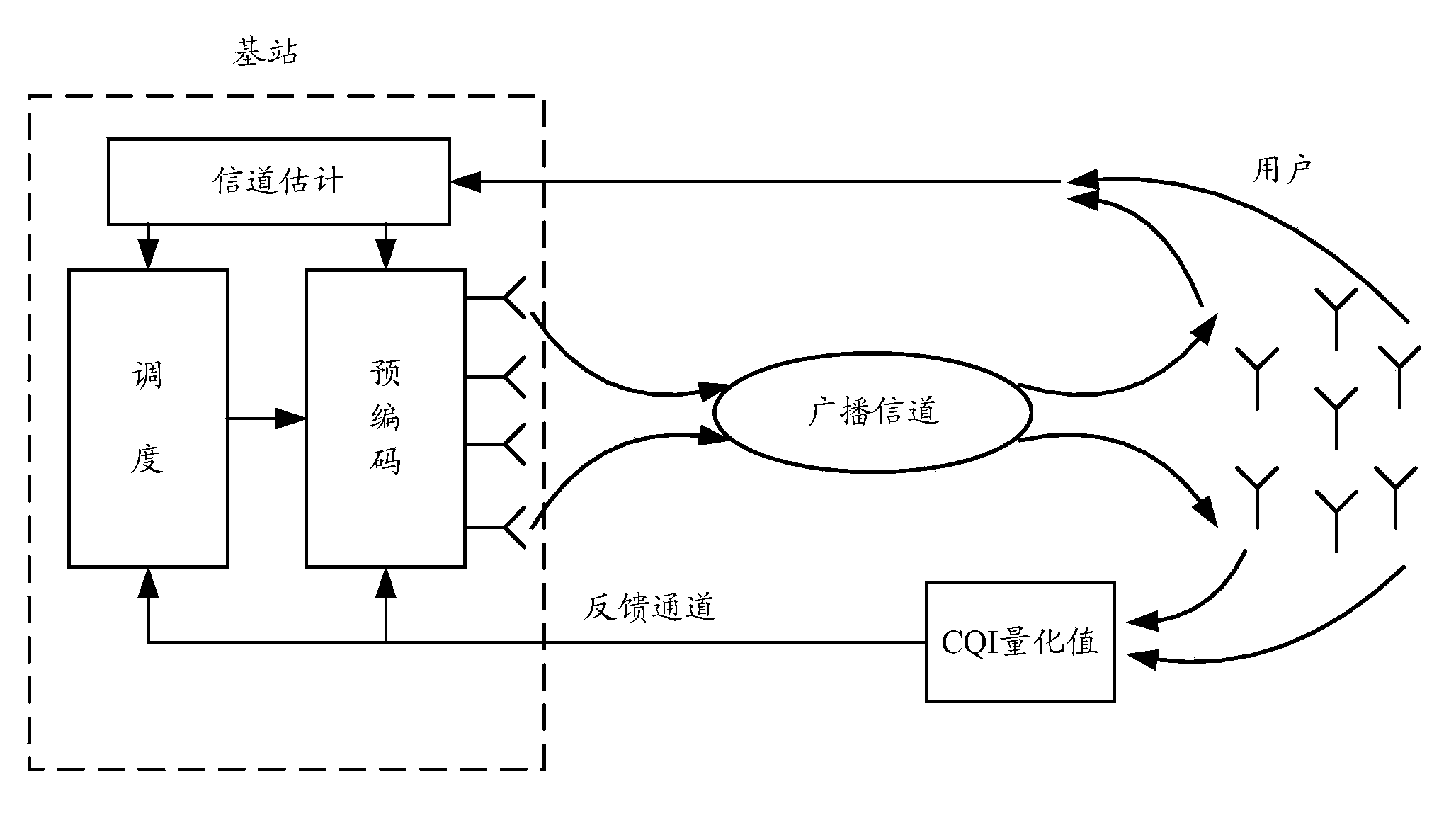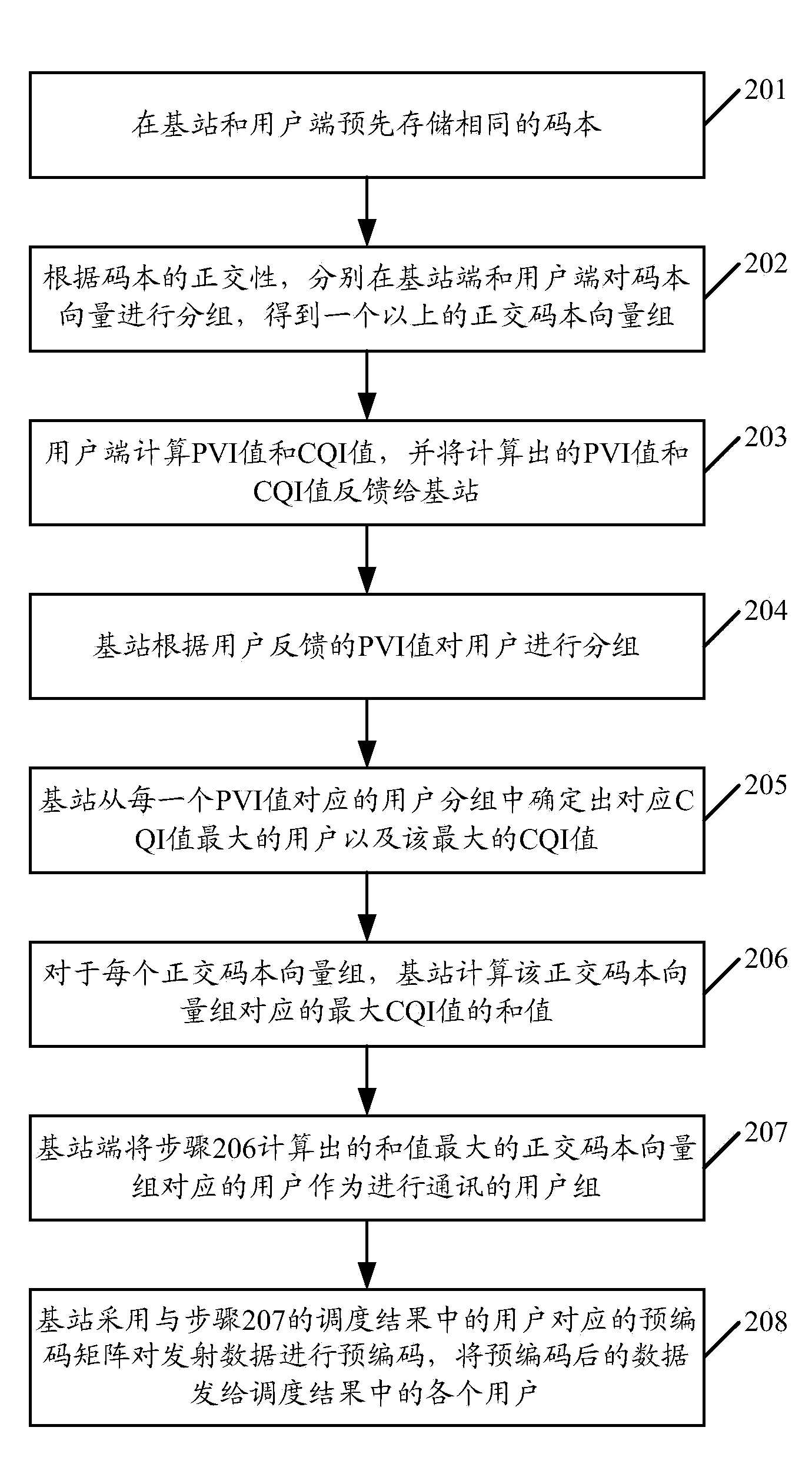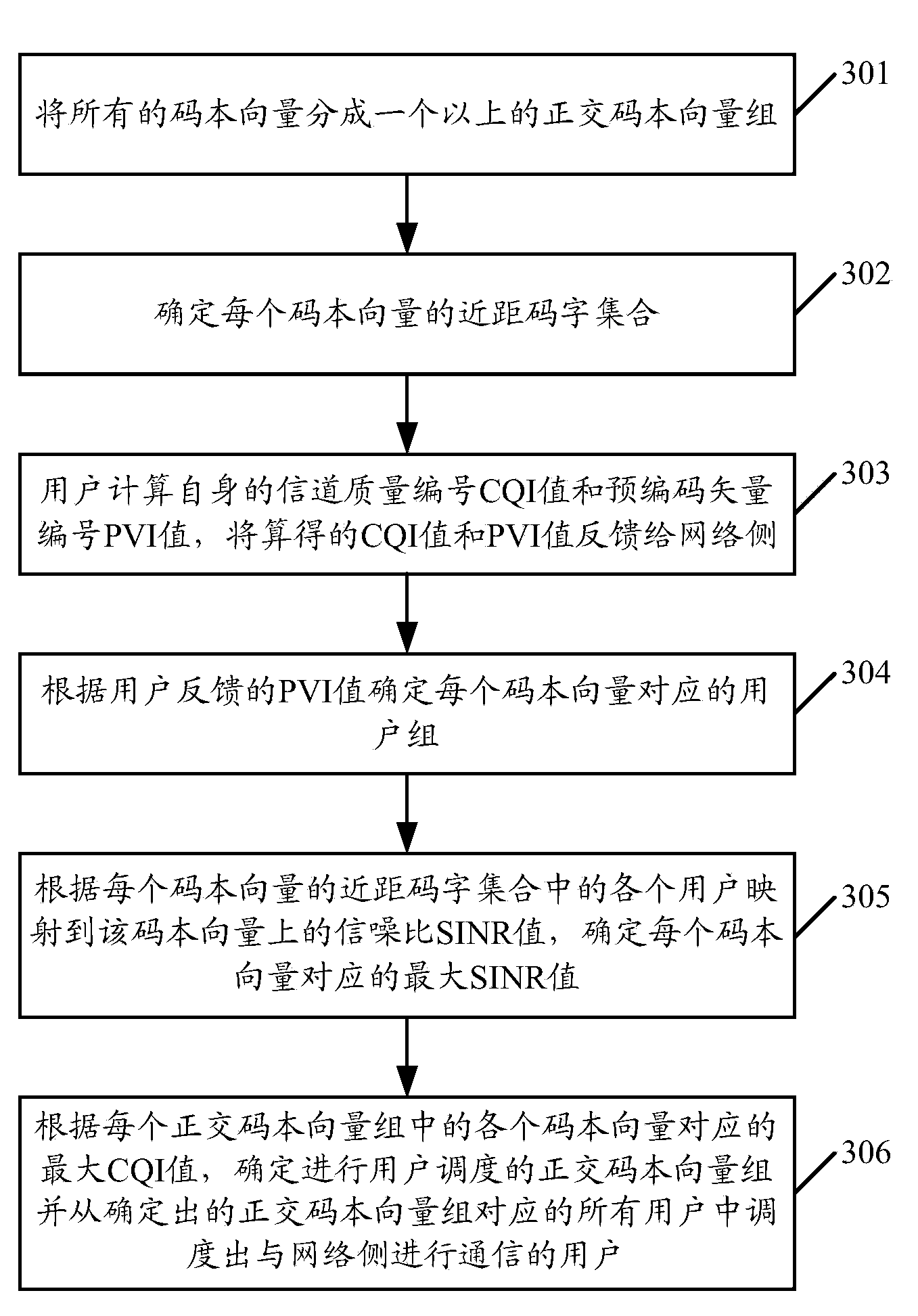User scheduling method in mobile communication system
A mobile communication system and user scheduling technology, which is applied in the field of user scheduling in mobile communication systems, can solve the problems of reducing the probability of user allocation and increasing the failure of user pairing failure and scheduling failure, so as to improve the probability of successful user pairing and expand the space for user scheduling , the effect of increasing the probability of success
- Summary
- Abstract
- Description
- Claims
- Application Information
AI Technical Summary
Problems solved by technology
Method used
Image
Examples
Embodiment Construction
[0056] image 3 It is a flow chart of the user scheduling method in the mobile communication system provided by the present invention.
[0057] Such as image 3 As shown, the method includes:
[0058] Step 301, divide all codebook vectors into more than one orthogonal codebook vector group.
[0059] In this step, the codebook vectors are divided into one or more vector groups according to the number of antennas on the network side and the number of antennas on the user side, and the codebook vectors in each vector group are mutually orthogonal.
[0060] Step 302, determine a set of short-distance codewords for each codebook vector.
[0061] In this step, the threshold value of the distance between the codebook vectors is preset, and for each codebook vector Store the codebook vector with The set of codebook vectors whose distance is not greater than the threshold value the collection is the codebook vector A set of short-range codewords.
[0062] Step 303, the us...
PUM
 Login to View More
Login to View More Abstract
Description
Claims
Application Information
 Login to View More
Login to View More - R&D
- Intellectual Property
- Life Sciences
- Materials
- Tech Scout
- Unparalleled Data Quality
- Higher Quality Content
- 60% Fewer Hallucinations
Browse by: Latest US Patents, China's latest patents, Technical Efficacy Thesaurus, Application Domain, Technology Topic, Popular Technical Reports.
© 2025 PatSnap. All rights reserved.Legal|Privacy policy|Modern Slavery Act Transparency Statement|Sitemap|About US| Contact US: help@patsnap.com



